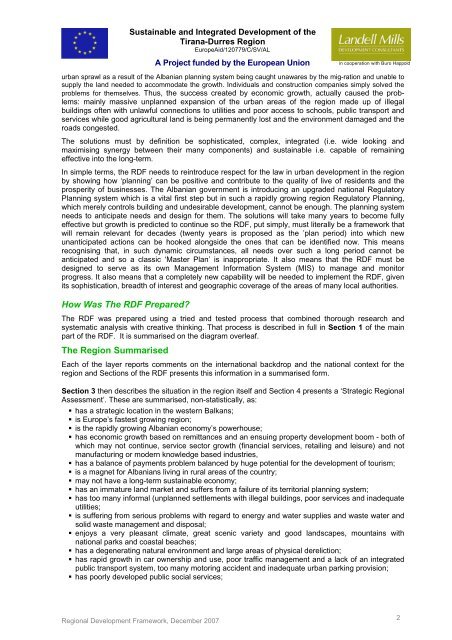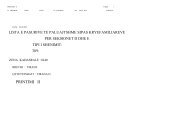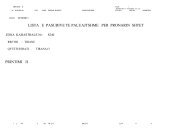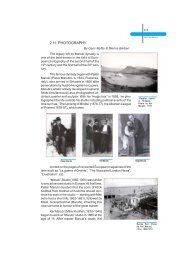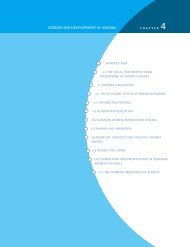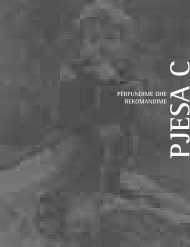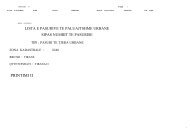Durres Tirana Corridor (PDF) - Sustainable Economic Development ...
Durres Tirana Corridor (PDF) - Sustainable Economic Development ...
Durres Tirana Corridor (PDF) - Sustainable Economic Development ...
Create successful ePaper yourself
Turn your PDF publications into a flip-book with our unique Google optimized e-Paper software.
<strong>Sustainable</strong> and Integrated <strong>Development</strong> of the<br />
<strong>Tirana</strong>-<strong>Durres</strong> Region<br />
EuropeAid/120779/C/SV/AL<br />
A Project funded by the European Union<br />
in cooperation with Buro Happold<br />
urban sprawl as a result of the Albanian planning system being caught unawares by the mig-ration and unable to<br />
supply the land needed to accommodate the growth. Individuals and construction companies simply solved the<br />
problems for themselves. Thus, the success created by economic growth, actually caused the problems:<br />
mainly massive unplanned expansion of the urban areas of the region made up of illegal<br />
buildings often with unlawful connections to utilities and poor access to schools, public transport and<br />
services while good agricultural land is being permanently lost and the environment damaged and the<br />
roads congested.<br />
The solutions must by definition be sophisticated, complex, integrated (i.e. wide looking and<br />
maximising synergy between their many components) and sustainable i.e. capable of remaining<br />
effective into the long-term.<br />
In simple terms, the RDF needs to reintroduce respect for the law in urban development in the region<br />
by showing how ‘planning’ can be positive and contribute to the quality of live of residents and the<br />
prosperity of businesses. The Albanian government is introducing an upgraded national Regulatory<br />
Planning system which is a vital first step but in such a rapidly growing region Regulatory Planning,<br />
which merely controls building and undesirable development, cannot be enough. The planning system<br />
needs to anticipate needs and design for them. The solutions will take many years to become fully<br />
effective but growth is predicted to continue so the RDF, put simply, must literally be a framework that<br />
will remain relevant for decades (twenty years is proposed as the ’plan period) into which new<br />
unanticipated actions can be hooked alongside the ones that can be identified now. This means<br />
recognising that, in such dynamic circumstances, all needs over such a long period cannot be<br />
anticipated and so a classic ‘Master Plan’ is inappropriate. It also means that the RDF must be<br />
designed to serve as its own Management Information System (MIS) to manage and monitor<br />
progress. It also means that a completely new capability will be needed to implement the RDF, given<br />
its sophistication, breadth of interest and geographic coverage of the areas of many local authorities.<br />
How Was The RDF Prepared?<br />
The RDF was prepared using a tried and tested process that combined thorough research and<br />
systematic analysis with creative thinking. That process is described in full in Section 1 of the main<br />
part of the RDF. It is summarised on the diagram overleaf.<br />
The Region Summarised<br />
Each of the layer reports comments on the international backdrop and the national context for the<br />
region and Sections of the RDF presents this information in a summarised form.<br />
Section 3 then describes the situation in the region itself and Section 4 presents a ‘Strategic Regional<br />
Assessment’. These are summarised, non-statistically, as:<br />
• has a strategic location in the western Balkans;<br />
• is Europe’s fastest growing region;<br />
• is the rapidly growing Albanian economy’s powerhouse;<br />
• has economic growth based on remittances and an ensuing property development boom - both of<br />
which may not continue, service sector growth (financial services, retailing and leisure) and not<br />
manufacturing or modern knowledge based industries,<br />
• has a balance of payments problem balanced by huge potential for the development of tourism;<br />
• is a magnet for Albanians living in rural areas of the country;<br />
• may not have a long-term sustainable economy;<br />
• has an immature land market and suffers from a failure of its territorial planning system;<br />
• has too many informal (unplanned settlements with illegal buildings, poor services and inadequate<br />
utilities;<br />
• is suffering from serious problems with regard to energy and water supplies and waste water and<br />
solid waste management and disposal;<br />
• enjoys a very pleasant climate, great scenic variety and good landscapes, mountains with<br />
national parks and coastal beaches;<br />
• has a degenerating natural environment and large areas of physical dereliction;<br />
• has rapid growth in car ownership and use, poor traffic management and a lack of an integrated<br />
public transport system, too many motoring accident and inadequate urban parking provision;<br />
• has poorly developed public social services;<br />
Regional <strong>Development</strong> Framework, December 2007<br />
2


